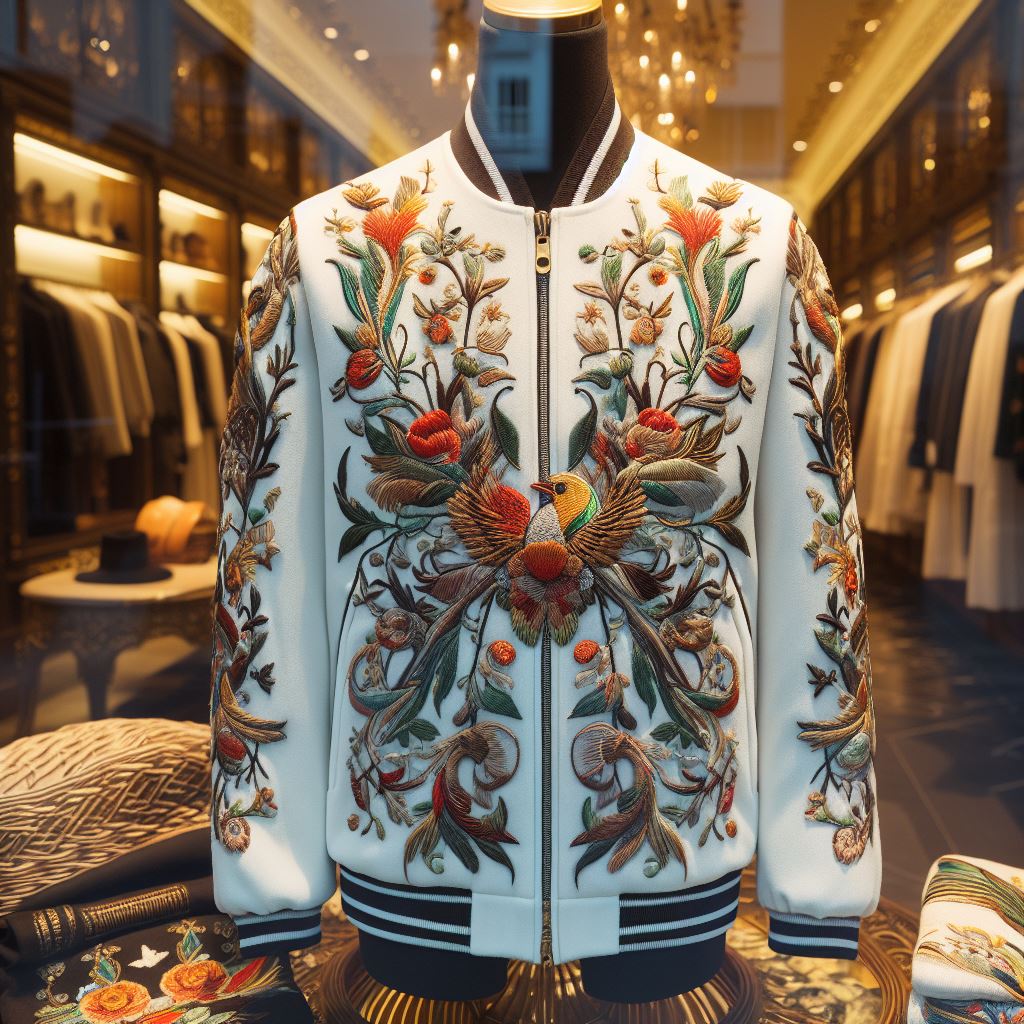Humans have been embroidering for literally thousands of years, and yet it is not a process that has sat still or stagnated. In fact its popularity is, like all fashion trends, somewhat cyclical – and the application of modern technology to it is giving high-end brands a way to engage audiences that are hungry for personalisation.
To understand why this is happening right now, let’s talk about the motivating factors encouraging retailers to make custom embroidery a staple of their current line-ups.
Elevating Brand Identity
Luxury brands thrive on differentiation and memorability – and providing personalised products can also boost revenues by as much as 25%. In this context, custom embroidery creates a tangible connection between the brand and its clientele. Its benefits include:
Enhanced Perception of Quality
Intricate embroidery can instantly elevate the perceived value of any item. When customers see detailed stitching, they associate it with craftsmanship.
For instance, in the latest YouGov poll on popular fashion and clothing brands, the top 2 spots are occupied by Clarks and Dr. Martens – a pair of long-standing footwear purveyors that put quality at the top of the agenda, and also promote personalisation as part and parcel of their brand identities. The Clarks Originals Insta account and the DIY Docs community further perpetuate this ethos.
Personalised Touch
Offering customisation options like initials or unique designs makes products feel exclusive. This personal touch fosters brand loyalty and customer satisfaction.
This is easier than ever for all retailers to achieve, even if they aren’t at the upper end of the spectrum in terms of pricing or brand visibility.
Thanks to the fact that there are plenty of services providing t-shirt printing UK brands can take advantage of, custom merch – and increased buyer engagement – are just a few clicks away.
Distinctiveness in a Crowded Market
Each year Brits spend over £57 billion on clothing, meaning the amount of competition in this space is immense, even where high-end brands are concerned.
As such, companies use custom embroidery to create unique patterns that are hard to replicate, setting them apart from mass-produced items – and giving customers something to show off that elevates them above the herd as well.

Storytelling Through Design
Embroidered elements can tell a brand’s story or reflect its heritage, creating an emotional connection with the consumer.
Limited Edition Collections
By offering limited runs of embroidered products, brands can create a sense of exclusivity and urgency among buyers – in turn generating secondary markets for sought-after items, which further boost the idea that what they have to offer is in-demand and yet out of reach.
Cross-Cultural Appeal
Embroidery styles from different cultures can be incorporated to appeal to diverse customer bases and celebrate global artistry. For instance, we’ve seen brands like Raas the Global Naari transplant Indian embroidery to Western fashion shows to great effect.
Integrating Technology with Traditional Craft
While embroidery has ancient roots – with the V&A’s range of examples stretching back to the 13th century – today’s luxury brands are able to leverage cutting-edge technology to streamline and innovate the process. This blend of old and new enhances both efficiency and creativity.
Here’s how:
- Computer-Aided Design (CAD): Modern embroidery machines use CAD software to create precise, intricate designs quickly. Brands can experiment with complex patterns that were previously impossible by hand – and can even use generative AI to push new boundaries, as has been done by the likes of Prada.
- 3D Embroidery Techniques: Advanced methods such as 3D puff embroidery add texture and dimension, making logos or monograms stand out on apparel and accessories.
- Eco-Friendly Practices: Using sustainable materials in thread production aligns with the increasing consumer demand for eco-conscious products. Brands can market these efforts as part of their sustainability-focused branding strategy.
Wrapping Up
High-end retail brands are in an interesting position in that they need to perpetuate the ideas of exclusivity and luxury while still ensuring that they are widely known and highly in-demand among average consumers.
Custom embroidery is just one of the arrows in their quiver of promotional strategies, and as we’ve shown it can hit the target more often than not thanks to its multifaceted advantages and ease of implementation.



